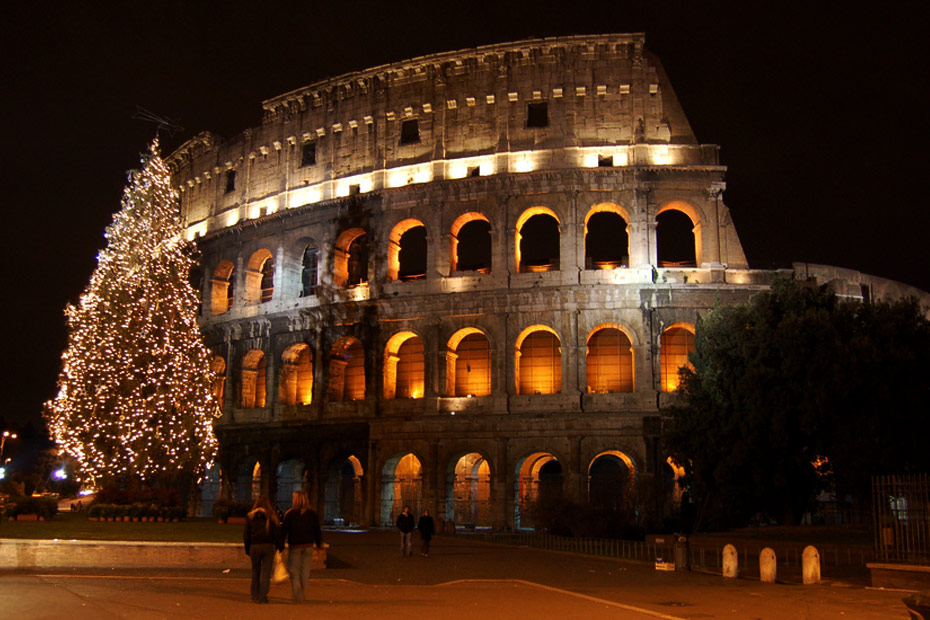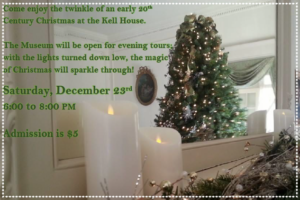CHRISTMAS TIPS
Tips for less stressful holiday travel

As the holiday season is upon us, it can be a stressful time for many, including for those traveling to visit family and friends. Follow these tips below to help make your holiday travel less stressful. See your mid-week News for other tips, along with more holiday fun in each edition of The Bowie News in November.
Tips for less stressful holiday travel
Roadways, railways and skies tend to get busy come the holiday season, when millions of people across the globe travel to visit family and friends.
Wherever travelers are headed, be it across the country or across the world, they should realize that many other people are traveling as well. That can lead to traffic, long lines and other side effects associated with large crowds. But before travelers let the idea of challenging travel conditions deter them, they can consider certain ways to make the process of getting from point A to point B a bit more manageable.
Travel by car
Those traveling by automobile will have a few extra steps to take to ensure their trips go off with minimal disturbances. One of the more important steps is to ensure the vehicle is properly maintained prior to departing. Have the car checked by a mechanic and take care of any service appointments, such as oil changes or tire rotations.
Map out the route in advance and have an alternative plan if the route chosen proves to be too congested. One idea is to choose a scenic drive that may be a little longer but has less traffic. In addition, account for rest stops or points of interest that can break up the trip. Apps such as GasBuddy can help drivers find the cheapest gas or the cleanest bathrooms along their routes.
Bring along plenty of snacks so you can eat healthy and arenÕt forced to rely on foods you otherwise would not eat. This is particularly helpful with keeping kids satiated. Plan for a few treats along the way so that everyone traveling has an end goal, such as an ice cream or a souvenir.
Traveling by plane
One of the key things air travelers can do to make holiday traveling easier is to avoid peak travel dates. Whenever possible, avoid traveling the day right before the holiday, which tends be the busiest and most expensive. Remember, weekends tend to be more harried and expensive as well, particularly when the holidays fall in close proximity to a weekend.
Weather is a gamble in many regions of the world during the holiday season. Develop a contingency plan just in case foul weather delays or cancels flights. ItÕs much less stressful to put plan B into motion than it can be to rush around trying to make new, last-minute plans.
Always shop around for the best rates, but also the best atmosphere. It may be wiser to fly out of a smaller airport where crowds will be thinner and delays less frequent, or you may prefer a larger airport thatÕs closer to home and offers more amenities.
Another way to avoid delays is to pack minimally. Ship gifts and even travel essentials ahead to your destination, and only bring carry-on bags aboard the plane. This helps travelers sail through security checks and avoid the crowds at the luggage carousels.
Holiday travel requires planning, patience and having alternative plans in place so that everyone can make it home for the holidays. TF169407
CHRISTMAS TIPS
Come see the Kell House decorated for the holidays
We have three ways for you to come see the Kell House decorated in all its Christmas finery this week before it’ll be closed until 2018!
Regular weekday tours will take place 10 a.m. to 3 p.m., Monday through Friday (closed Wednesday) from 10 a.m. to 3 p.m.
We will be part of Downtown’s Candlewalk on Thursday, December 21st, from 5 p.m. to 8 p.m. Come see our favorites Elves!
Or come enjoy the Kell House with a special Candelight tour on Saturday. December 23rd from 6 p.m. to 8 p.m. Admission is $5.
CHRISTMAS TIPS
Christmas Trivia
CHRISTMAS TIPS
Christmas Traditions from Around the World

By History.com
SWEDEN: ‘GOD JUL!’
Most people in Scandinavian countries honor St. Lucia (also known as St. Lucy) each year on December 13. The celebration of St. Lucia Day began in Sweden, but had spread to Denmark and Finland by the mid-19th century.
In these countries, the holiday is considered the beginning of the Christmasseason and, as such, is sometimes referred to as “little Yule.” Traditionally, the oldest daughter in each family rises early and wakes each of her family members, dressed in a long, white gown with a red sash, and wearing a crown made of twigs with nine lighted candles. For the day, she is called “Lussi” or “Lussibruden (Lucy bride).” The family then eats breakfast in a room lighted with candles.
Any shooting or fishing done on St. Lucia Day was done by torchlight, and people brightly illuminated their homes. At night, men, women, and children would carry torches in a parade. The night would end when everyone threw their torches onto a large pile of straw, creating a huge bonfire. In Finland today, one girl is chosen to serve as the national Lucia and she is honored in a parade in which she is surrounded by torchbearers.
Light is a main theme of St. Lucia Day, as her name, which is derived from the Latin word lux, means light. Her feast day is celebrated near the shortest day of the year, when the sun’s light again begins to strengthen. Lucia lived in Syracuse during the fourth century when persecution of Christians was common. Unfortunately, most of her story has been lost over the years. According to one common legend, Lucia lost her eyes while being tortured by a Diocletian for her Christian beliefs. Others say she may have plucked her own eyes out to protest the poor treatment of Christians. Lucia is the patron saint of the blind.
FINLAND: ‘HYVÄÄ JOULUA!’
Many Finns visit the sauna on Christmas Eve. Families gather and listen to the national “Peace of Christmas” radio broadcast. It is customary to visit the gravesites of departed family members.
NORWAY: ‘GLEDELIG JUL!’
Norway is the birthplace of the Yule log. The ancient Norse used the Yule log in their celebration of the return of the sun at winter solstice. “Yule” came from the Norse word hweol, meaning wheel. The Norse believed that the sun was a great wheel of fire that rolled towards and then away from the earth. Ever wonder why the family fireplace is such a central part of the typical Christmas scene? This tradition dates back to the Norse Yule log. It is probably also responsible for the popularity of log-shaped cheese, cakes, and desserts during the holidays.
GERMANY: ‘FROEHLICHE WEIHNACHTEN!’
Decorating evergreen trees had always been a part of the German winter solstice tradition. The first “Christmas trees” explicitly decorated and named after the Christian holiday, appeared in Strasbourg, in Alsace in the beginning of the 17th century. After 1750, Christmas trees began showing up in other parts of Germany, and even more so after 1771, when Johann Wolfgang von Goethe visited Strasbourg and promptly included a Christmas tree is his novel, The Suffering of Young Werther. In the 1820s, the first German immigrants decorated Christmas trees in Pennsylvania. After Germany’s Prince Albert married Queen Victoria, he introduced the Christmas tree tradition to England. In 1848, the first American newspaper carried a picture of a Christmas tree and the custom spread to nearly every home in just a few years.
MEXICO: ‘FELIZ NAVIDAD!’
In 1828, the American minister to Mexico, Joel R. Poinsett, brought a red-and-green plant from Mexico to America. As its coloring seemed perfect for the new holiday, the plants, which were called poinsettias after Poinsett, began appearing in greenhouses as early as 1830. In 1870, New York stores began to sell them at Christmas. By 1900, they were a universal symbol of the holiday.
In Mexico, paper mache sculptures called pinatas are filled with candy and coins and hung from the ceiling. Children then take turns hitting the pinata until it breaks, sending a shower of treats to the floor. Children race to gather as much of of the loot as they can.
ENGLAND: ‘MERRY CHRISTMAS!’
An Englishman named John Calcott Horsley helped to popularize the tradition of sending Christmas greeting cards when he began producing small cards featuring festive scenes and a pre-written holiday greeting in the late 1830s. Newly efficient post offices in England and the United States made the cards nearly overnight sensations. At about the same time, similar cards were being made by R.H. Pease, the first American card maker, in Albany, New York, and Louis Prang, a German who immigrated to America in 1850.
Celtic and Teutonic peoples had long considered mistletoe to have magic powers. It was said to have the ability to heal wounds and increase fertility. Celts hung mistletoe in their homes in order to bring themselves good luck and ward off evil spirits. During holidays in the Victorian era, the English would hang sprigs of mistletoe from ceilings and in doorways. If someone was found standing under the mistletoe, they would be kissed by someone else in the room, behavior not usually demonstrated in Victorian society.
Plum pudding is an English dish dating back to the Middle Ages. Suet, flour, sugar, raisins, nuts, and spices are tied loosely in cloth and boiled until the ingredients are “plum,” meaning they have enlarged enough to fill the cloth. It is then unwrapped, sliced like cake, and topped with cream.
Caroling also began in England. Wandering musicians would travel from town to town visiting castles and homes of the rich. In return for their performance, the musicians hoped to receive a hot meal or money.
In the United States and England, children hang stockings on their bedpost or near a fireplace on Christmas Eve, hoping that it will be filled with treats while they sleep. In Scandinavia, similar-minded children leave their shoes on the hearth. This tradition can be traced to legends about Saint Nicholas. One legend tells of three poor sisters who could not marry because they had no money for a dowry. To save them from being sold by their father, St. Nick left each of the three sisters gifts of gold coins. One went down the chimney and landed in a pair of shoes that had been left on the hearth. Another went into a window and into a pair of stockings left hanging by the fire to dry.
FRANCE: ‘JOYEUX NOËL!’
In France, Christmas is called Noel. This comes from the French phrase les bonnes nouvelles, which means “the good news” and refers to the gospel.
In southern France, some people burn a log in their homes from Christmas Eve until New Year’s Day. This stems from an ancient tradition in which farmers would use part of the log to ensure good luck for the next year’s harvest.
ITALY: ‘BUON NATALE!’
Italians call Chrismas Il Natale, meaning “the birthday.”
AUSTRALIA
In Australia, the holiday comes in the middle of summer and it’s not unusual for some parts of Australia to hit 100 degrees Farenheit on Christmas day.
During the warm and sunny Australian Christmas season, beach time and outdoor barbecues are common. Traditional Christmas day celebrations include family gatherings, exchanging gifts and either a hot meal with ham, turkey, pork or seafood or barbeques.
UKRAINE: ‘SROZHDESTVOM KRISTOVYM!’
Ukrainians prepare a traditional twelve-course meal. A family’s youngest child watches through the window for the evening star to appear, a signal that the feast can begin.
CANADA
Most Canadian Christmas traditions are very similar to those practiced in the United States. In the far north of the country, the Eskimos celebrate a winter festival called sinck tuck, which features parties with dancing and the exchanging of gifts.
GREECE: ‘KALA CHRISTOUYENNA!’
In Greece, many people believe in kallikantzeri, goblins that appear to cause mischief during the 12 days of Christmas. Gifts are usually exchanged on January 1, St. Basil’s Day.
CENTRAL AMERICA
A manger scene is the primary decoration in most southern European, Central American, and South American nations. St. Francis of Assisi created the first living nativity in 1224 to help explain the birth of Jesus to his followers.
JAMESTOWN, VIRGINIA
According to reports by Captain John Smith, the first eggnog made in the United States was consumed in his 1607 Jamestown settlement. Nog comes from the word grog, which refers to any drink made with rum.
-

 NEWS3 years ago
NEWS3 years ago2 hurt, 1 jailed after shooting incident north of Nocona
-

 NEWS2 years ago
NEWS2 years agoSuspect indicted, jailed in Tia Hutson murder
-

 NEWS2 years ago
NEWS2 years agoSO investigating possible murder/suicide
-

 NEWS2 years ago
NEWS2 years agoWreck takes the life of BHS teen, 16
-

 NEWS2 years ago
NEWS2 years agoMurder unsolved – 1 year later Tia Hutson’s family angry, frustrated with no arrest
-

 NEWS2 years ago
NEWS2 years agoSheriff’s office called out to infant’s death
-

 NEWS2 years ago
NEWS2 years agoBowie Police face three-hour standoff after possible domestic fight
-

 NEWS3 years ago
NEWS3 years agoDriver stopped by a man running into the street, robbed at knifepoint











